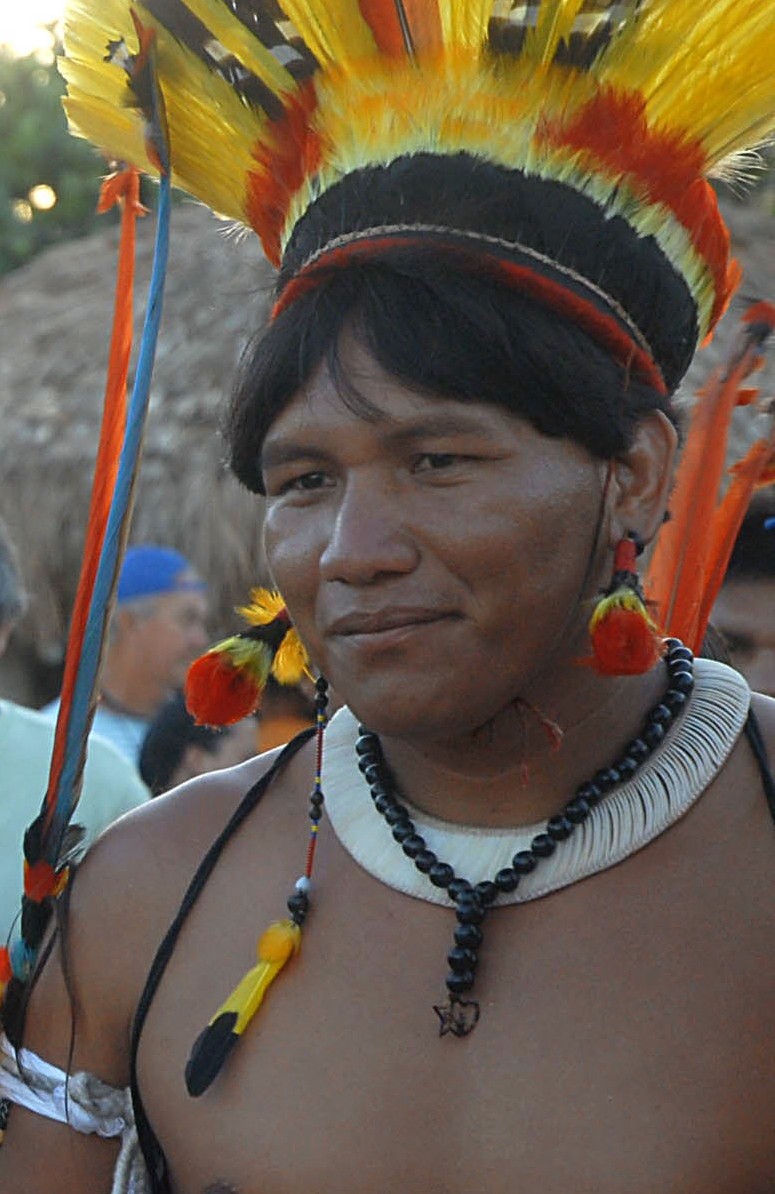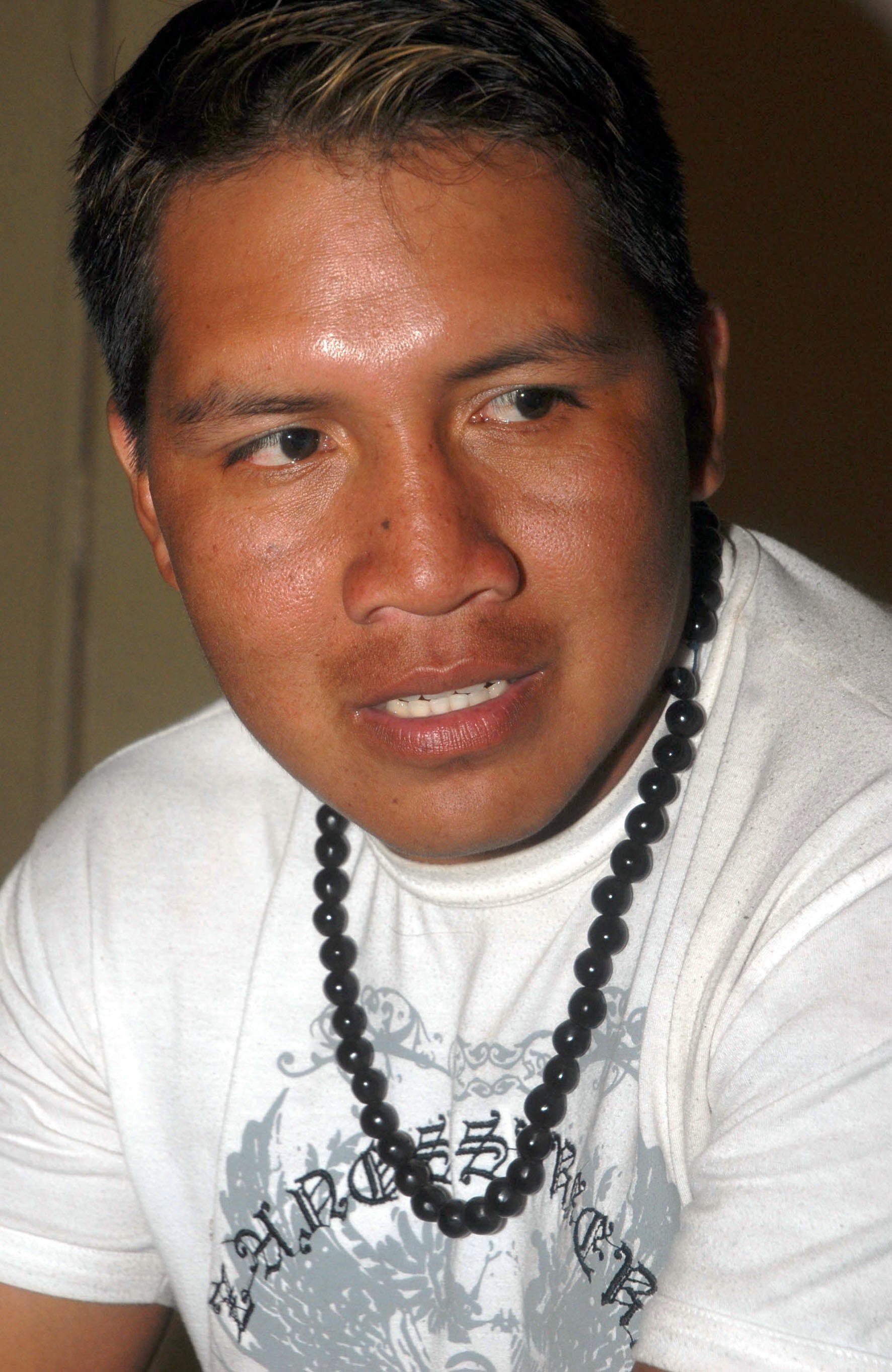|
Kuikuro
The Kuikuro are an indigenous people from the Mato Grosso region of Brazil. Their language, Kuikuro, is a part of the Cariban language family. The Kuikuro have many similarities with other Xingu tribes. They have a population of 592 in 2010, up from 450 in 2002. The Kuikuro are likely the descendants of the people who built the settlements known to archaeologists as Kuhikugu, located at the headwaters of the Xingu River.Heckenberger, Michael. ''The Ecology of Power: Culture, Place, and Personhood in the Southern Amazon, A.D. 1000-2000.'' New York: Routledge, 2005. The settlements were probably inhabited from around 1,500 years ago to about 400 years ago; after this point the population may have been reduced by diseases introduced by Europeans or, indirectly, by other native tribes who had traded with Europeans. Grann, David. ''The Lost City of Z: A Tale of Deadly Obsession in the Amazon.'' New York: Doubleday Publishing, 2009. Stories of Kuhikugu may have inspired the British ... [...More Info...] [...Related Items...] OR: [Wikipedia] [Google] [Baidu] |
Matipu Language
Amonap, also known as Apalakiri, is a Cariban language spoken by the Kuikuro and Kalapalo peoples of Brazil, and formerly by the Matipu. It is spoken in seven villages along the Culuene River in the Xingu Indigenous Park of Mato Grosso.Seki, Lucy. 2011Alto Xingu: uma área linguística?In: Franchetto, Bruna (ed.), Alto Xingu: uma sociedade multilíngue', p. 57-85. Rio de Janeiro: Museu do Índio/FUNAI. Although bilingualism in Brazilian Portuguese is prevalent among the men of the community, Amonap is not as immediately endangered as are many Brazilian languages. As of 2006, there are an estimated 1,100 native speakers of the language, including 600 Kuikúro and 500 Kalapálo, who speak the same language but are ethnically distinct. The Endangered Languages Project lists the language as "threatened". In collaboration with linguist Bruna Franchetto, the Kuikuro have created a library of recordings that feature Kuikuro stories in the language that is archived at the Archive ... [...More Info...] [...Related Items...] OR: [Wikipedia] [Google] [Baidu] |
Kuikuro Language
Amonap, also known as Apalakiri, is a Cariban language spoken by the Kuikuro and Kalapalo peoples of Brazil, and formerly by the Matipu. It is spoken in seven villages along the Culuene River in the Xingu Indigenous Park of Mato Grosso.Seki, Lucy. 2011Alto Xingu: uma área linguística?In: Franchetto, Bruna (ed.), Alto Xingu: uma sociedade multilíngue', p. 57-85. Rio de Janeiro: Museu do Índio/FUNAI. Although bilingualism in Brazilian Portuguese is prevalent among the men of the community, Amonap is not as immediately endangered as are many Brazilian languages. As of 2006, there are an estimated 1,100 native speakers of the language, including 600 Kuikúro and 500 Kalapálo, who speak the same language but are ethnically distinct. The Endangered Languages Project lists the language as "threatened". In collaboration with linguist Bruna Franchetto, the Kuikuro have created a library of recordings that feature Kuikuro stories in the language that is archived at the Archive of ... [...More Info...] [...Related Items...] OR: [Wikipedia] [Google] [Baidu] |
Kalapalo Language
Amonap, also known as Apalakiri, is a Cariban language spoken by the Kuikuro and Kalapalo peoples of Brazil, and formerly by the Matipu. It is spoken in seven villages along the Culuene River in the Xingu Indigenous Park of Mato Grosso.Seki, Lucy. 2011Alto Xingu: uma área linguística?In: Franchetto, Bruna (ed.), Alto Xingu: uma sociedade multilíngue', p. 57-85. Rio de Janeiro: Museu do Índio/FUNAI. Although bilingualism in Brazilian Portuguese is prevalent among the men of the community, Amonap is not as immediately endangered as are many Brazilian languages. As of 2006, there are an estimated 1,100 native speakers of the language, including 600 Kuikúro and 500 Kalapálo, who speak the same language but are ethnically distinct. The Endangered Languages Project lists the language as "threatened". In collaboration with linguist Bruna Franchetto, the Kuikuro have created a library of recordings that feature Kuikuro stories in the language that is archived at the Archive of ... [...More Info...] [...Related Items...] OR: [Wikipedia] [Google] [Baidu] |
Kuikuro002
The Kuikuro are an indigenous people from the Mato Grosso region of Brazil. Their language, Kuikuro, is a part of the Cariban language family. The Kuikuro have many similarities with other Xingu tribes. They have a population of 592 in 2010, up from 450 in 2002. The Kuikuro are likely the descendants of the people who built the settlements known to archaeologists as Kuhikugu, located at the headwaters of the Xingu River.Heckenberger, Michael. ''The Ecology of Power: Culture, Place, and Personhood in the Southern Amazon, A.D. 1000-2000.'' New York: Routledge, 2005. The settlements were probably inhabited from around 1,500 years ago to about 400 years ago; after this point the population may have been reduced by diseases introduced by Europeans or, indirectly, by other native tribes who had traded with Europeans. Grann, David. ''The Lost City of Z: A Tale of Deadly Obsession in the Amazon.'' New York: Doubleday Publishing, 2009. Stories of Kuhikugu may have inspired the British e ... [...More Info...] [...Related Items...] OR: [Wikipedia] [Google] [Baidu] |
Kuikuro003
The Kuikuro are an indigenous people from the Mato Grosso region of Brazil. Their language, Kuikuro, is a part of the Cariban language family. The Kuikuro have many similarities with other Xingu tribes. They have a population of 592 in 2010, up from 450 in 2002. The Kuikuro are likely the descendants of the people who built the settlements known to archaeologists as Kuhikugu, located at the headwaters of the Xingu River.Heckenberger, Michael. ''The Ecology of Power: Culture, Place, and Personhood in the Southern Amazon, A.D. 1000-2000.'' New York: Routledge, 2005. The settlements were probably inhabited from around 1,500 years ago to about 400 years ago; after this point the population may have been reduced by diseases introduced by Europeans or, indirectly, by other native tribes who had traded with Europeans. Grann, David. ''The Lost City of Z: A Tale of Deadly Obsession in the Amazon.'' New York: Doubleday Publishing, 2009. Stories of Kuhikugu may have inspired the British e ... [...More Info...] [...Related Items...] OR: [Wikipedia] [Google] [Baidu] |
Kuikuro004
The Kuikuro are an indigenous people from the Mato Grosso region of Brazil. Their language, Kuikuro, is a part of the Cariban language family. The Kuikuro have many similarities with other Xingu tribes. They have a population of 592 in 2010, up from 450 in 2002. The Kuikuro are likely the descendants of the people who built the settlements known to archaeologists as Kuhikugu, located at the headwaters of the Xingu River.Heckenberger, Michael. ''The Ecology of Power: Culture, Place, and Personhood in the Southern Amazon, A.D. 1000-2000.'' New York: Routledge, 2005. The settlements were probably inhabited from around 1,500 years ago to about 400 years ago; after this point the population may have been reduced by diseases introduced by Europeans or, indirectly, by other native tribes who had traded with Europeans. Grann, David. ''The Lost City of Z: A Tale of Deadly Obsession in the Amazon.'' New York: Doubleday Publishing, 2009. Stories of Kuhikugu may have inspired the British e ... [...More Info...] [...Related Items...] OR: [Wikipedia] [Google] [Baidu] |
Kuikuro001
The Kuikuro are an indigenous people from the Mato Grosso region of Brazil. Their language, Kuikuro, is a part of the Cariban language family. The Kuikuro have many similarities with other Xingu tribes. They have a population of 592 in 2010, up from 450 in 2002. The Kuikuro are likely the descendants of the people who built the settlements known to archaeologists as Kuhikugu, located at the headwaters of the Xingu River.Heckenberger, Michael. ''The Ecology of Power: Culture, Place, and Personhood in the Southern Amazon, A.D. 1000-2000.'' New York: Routledge, 2005. The settlements were probably inhabited from around 1,500 years ago to about 400 years ago; after this point the population may have been reduced by diseases introduced by Europeans or, indirectly, by other native tribes who had traded with Europeans. Grann, David. ''The Lost City of Z: A Tale of Deadly Obsession in the Amazon.'' New York: Doubleday Publishing, 2009. Stories of Kuhikugu may have inspired the British e ... [...More Info...] [...Related Items...] OR: [Wikipedia] [Google] [Baidu] |
Kuikuro006
The Kuikuro are an indigenous people from the Mato Grosso region of Brazil. Their language, Kuikuro, is a part of the Cariban language family. The Kuikuro have many similarities with other Xingu tribes. They have a population of 592 in 2010, up from 450 in 2002. The Kuikuro are likely the descendants of the people who built the settlements known to archaeologists as Kuhikugu, located at the headwaters of the Xingu River.Heckenberger, Michael. ''The Ecology of Power: Culture, Place, and Personhood in the Southern Amazon, A.D. 1000-2000.'' New York: Routledge, 2005. The settlements were probably inhabited from around 1,500 years ago to about 400 years ago; after this point the population may have been reduced by diseases introduced by Europeans or, indirectly, by other native tribes who had traded with Europeans. Grann, David. ''The Lost City of Z: A Tale of Deadly Obsession in the Amazon.'' New York: Doubleday Publishing, 2009. Stories of Kuhikugu may have inspired the British e ... [...More Info...] [...Related Items...] OR: [Wikipedia] [Google] [Baidu] |
Kuikuro005
The Kuikuro are an indigenous people from the Mato Grosso region of Brazil. Their language, Kuikuro, is a part of the Cariban language family. The Kuikuro have many similarities with other Xingu tribes. They have a population of 592 in 2010, up from 450 in 2002. The Kuikuro are likely the descendants of the people who built the settlements known to archaeologists as Kuhikugu, located at the headwaters of the Xingu River.Heckenberger, Michael. ''The Ecology of Power: Culture, Place, and Personhood in the Southern Amazon, A.D. 1000-2000.'' New York: Routledge, 2005. The settlements were probably inhabited from around 1,500 years ago to about 400 years ago; after this point the population may have been reduced by diseases introduced by Europeans or, indirectly, by other native tribes who had traded with Europeans. Grann, David. ''The Lost City of Z: A Tale of Deadly Obsession in the Amazon.'' New York: Doubleday Publishing, 2009. Stories of Kuhikugu may have inspired the British e ... [...More Info...] [...Related Items...] OR: [Wikipedia] [Google] [Baidu] |
Cariban Languages
The Cariban languages are a family of languages indigenous to northeastern South America. They are widespread across northernmost South America, from the mouth of the Amazon River to the Colombian Andes, and they are also spoken in small pockets of central Brazil. The languages of the Cariban family are relatively closely related. There are about three dozen, but most are spoken only by a few hundred people. Macushi is the only language among them with numerous speakers, estimated at 30,000. The Cariban family is well known among linguists partly because one language in the family—Hixkaryana—has a default word order of object–verb–subject. Previous to their discovery of this, linguists believed that this order did not exist in any spoken natural language. In the 16th century, Cariban peoples expanded into the Lesser Antilles. There they killed or displaced, and also mixed with the Arawak peoples who already inhabited the islands. The resulting language— Kalhíphona ... [...More Info...] [...Related Items...] OR: [Wikipedia] [Google] [Baidu] |
Cariban
The Cariban languages are a Language family, family of languages indigenous to northeastern South America. They are widespread across northernmost South America, from the mouth of the Amazon River to the Colombian Andes, and they are also spoken in small pockets of central Brazil. The languages of the Cariban family are relatively closely related. There are about three dozen, but most are spoken only by a few hundred people. Macushi language, Macushi is the only language among them with numerous speakers, estimated at 30,000. The Cariban family is well known among linguists partly because one language in the family—Hixkaryana—has a default word order of object–verb–subject. Previous to their discovery of this, linguists believed that this order did not exist in any spoken natural language. In the 16th century, Cariban peoples expanded into the Lesser Antilles. There they killed or displaced, and also mixed with the Arawaks, Arawak peoples who already inhabited the islands ... [...More Info...] [...Related Items...] OR: [Wikipedia] [Google] [Baidu] |
Kuhikugu
Kuhikugu is an archaeological site located in Brazil, at the headwaters of the Xingu River, in the Amazon Rainforest. The area around Kuhikugu is located in part of the Xingu National Park today. Kuhikugu was first uncovered by anthropologist Michael Heckenberger, working alongside the local Kuikuro people, who are the likely descendants of the original inhabitants of Kuhikugu. Archaeological complex and history In the broad sense, the name refers to an archaeological complex including twenty towns and villages, spread out over an area of around , where close to 50,000 people may have once lived. Kuhikugu was likely inhabited from a period of time around 1,500 years ago to a time as recently as 400 years ago, when the people living there were likely killed by diseases brought over by Europeans. Although Europeans likely did not spread it to the inhabitants of Kuhikugu directly, they did directly spread diseases to trade partners from other areas. By the time Europeans did make ... [...More Info...] [...Related Items...] OR: [Wikipedia] [Google] [Baidu] |







